New Order Found Please Review the order ASAP for the client to
proceed

Unread Message Found Please check the message ASAP and reply to client


I. Introduction
II. Strategic Human Resource Management
III. Recruitment and Talent Acquisition
IV. Employee Onboarding and Orientation
V. Employee Engagement
VI. Performance Management
VII. Training and Development
VIII. Diversity and Inclusion
IX. Employee Relations
X. Compensation and Benefits
XI. HR Technology and Automation
XII. Workplace Wellness Programs
XIII. Succession Planning
XIV. Legal and Ethical Considerations in HRM
XV. Global HRM Challenges
XVI. Future Trends in Human Resource Management
XVII. Frequently Asked Questions (FAQs)
XVIII. Conclusion
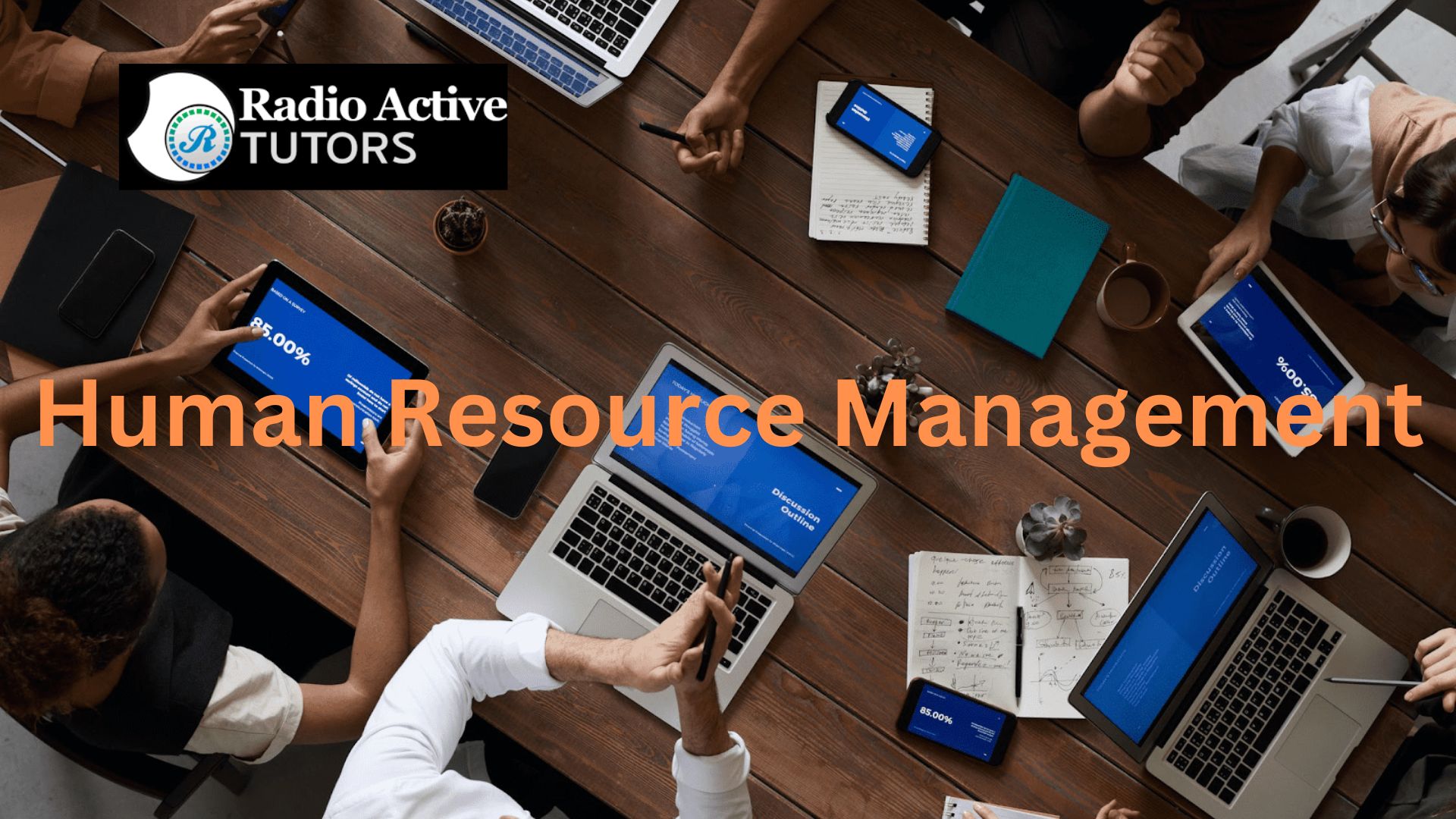
A. Definition of Human Resource Management (HRM)
Human Resource Management (HRM) is a multifaceted organizational function that revolves around managing and maximizing the potential of an organization’s most valuable asset – its people. At its core, HRM encompasses a strategic approach to human capital, involving the recruitment, selection, training, and development of employees. Beyond the administrative aspects, Human Resource Management is integral to fostering a positive workplace culture, ensuring employee engagement, and aligning individual goals with broader organizational objectives. It’s not merely about handling personnel matters; rather, Human Resource Management is a dynamic field that adapts to the evolving needs of both employees and the organization. In essence, HRM plays a pivotal role in shaping the workforce, nurturing talent, and contributing significantly to an organization’s overall success.
B. Significance of Human Resource Management in Organizational Success
The significance of Human Resource Management (HRM) in organizational success cannot be overstated. HRM is the linchpin that connects the strategic goals of an organization with the capabilities of its workforce. It plays a pivotal role in talent acquisition, development, and retention, ensuring that the right people are in the right roles with the necessary skills. Effective Human Resource Management contributes to a positive workplace culture, fostering employee engagement, satisfaction, and productivity. HR professionals are instrumental in aligning individual and team objectives with broader organizational goals, creating a cohesive and motivated workforce. Moreover, HRM is essential in navigating challenges such as diversity management, employee relations, and change management.
C. Evolution of HRM Practices
The evolution of Human Resource Management (HRM) practices reflects a fascinating journey marked by transformative shifts in workplace dynamics and organizational structures. Historically, Human Resource Management was primarily an administrative function concerned with payroll and personnel record-keeping. Over time, it has evolved into a strategic partner that actively contributes to organizational success. The shift is evident in the incorporation of strategic HRM practices, where HR professionals collaborate with top management to align HR strategies with broader business goals.
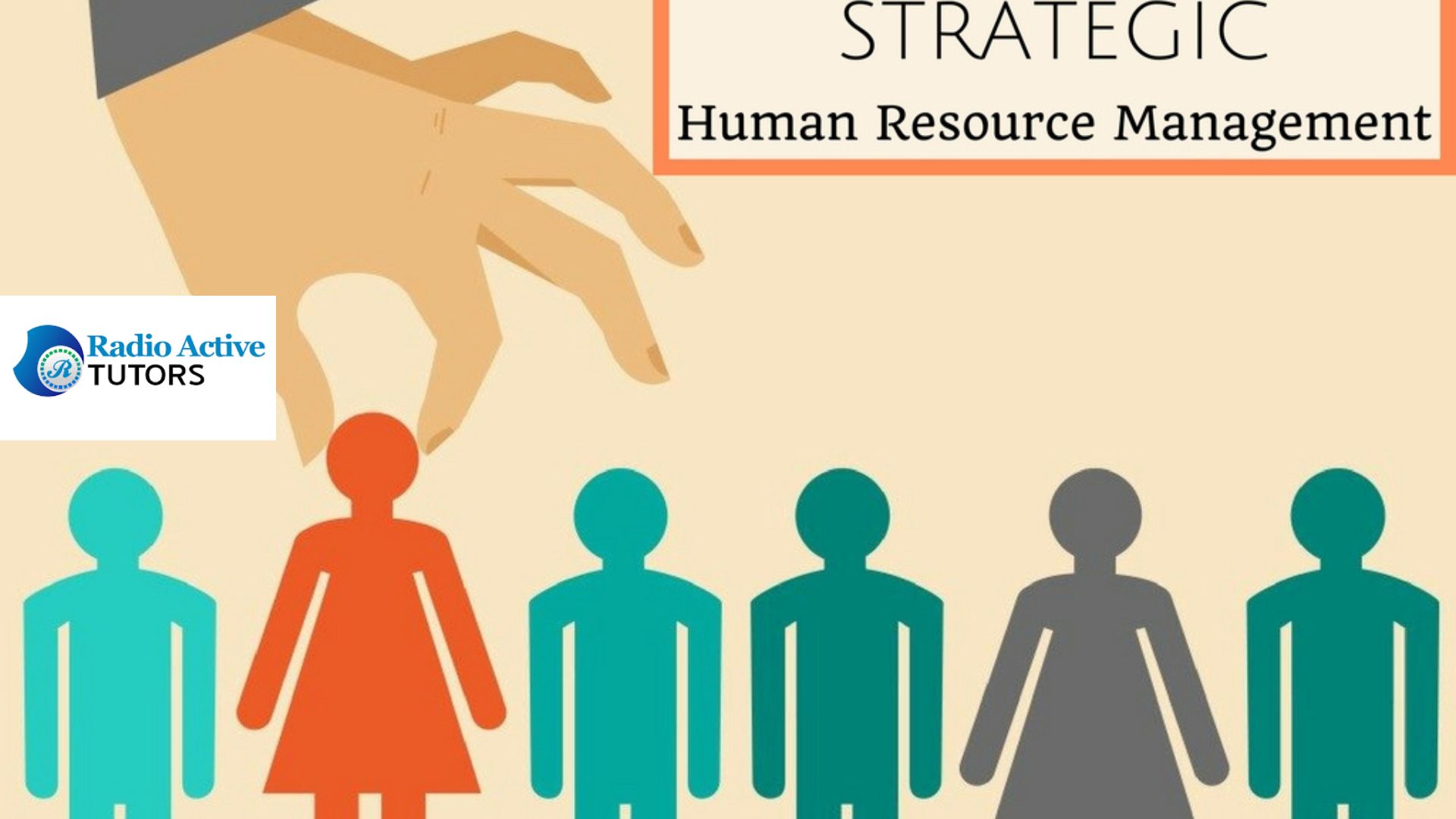
A. Aligning HRM with Organizational Goals
Aligning Human Resource Management (HRM) with organizational goals is a critical strategic imperative that underscores the symbiotic relationship between HR practices and overall business success. This alignment involves integrating HR functions seamlessly with the broader objectives and vision of the organization. HR professionals are not just administrators but strategic partners, collaborating with leadership to ensure that the workforce is not only proficient in their roles but also actively contributes to achieving organizational goals. By understanding and embracing the company’s mission, values, and long-term strategies, Human Resource Management becomes a driving force in shaping a cohesive and motivated workforce.
B. The Role of HRM in Strategic Planning
The role of Human Resource Management (HRM) in strategic planning is pivotal, acting as the linchpin that bridges organizational objectives with human capital dynamics. Strategic planning is about envisioning and charting the future course of the organization, and HRM plays a central role in this process by ensuring that the workforce is not only aligned with but actively contributes to the strategic goals. HR professionals engage in workforce analysis, identifying key skills and competencies necessary for the envisioned future. They collaborate with top management to forecast staffing needs, succession planning, and talent development strategies.
C. Case Studies of Successful Strategic HRM Implementation
Examining case studies of successful strategic Human Resource Management (HRM) implementation provides valuable insights into how organizations leverage HR strategies to achieve sustained success. These real-world examples showcase the tangible impact of aligning HR practices with overall business goals. One such illustration is the case of Company X, where a comprehensive strategic HRM approach was adopted to address skill gaps and enhance employee engagement. By implementing targeted training programs, fostering a culture of continuous learning, and aligning performance management with strategic objectives, Company X witnessed a significant improvement in productivity and employee satisfaction. Another noteworthy case is Company Y, which strategically integrated HR practices to promote diversity and inclusion.
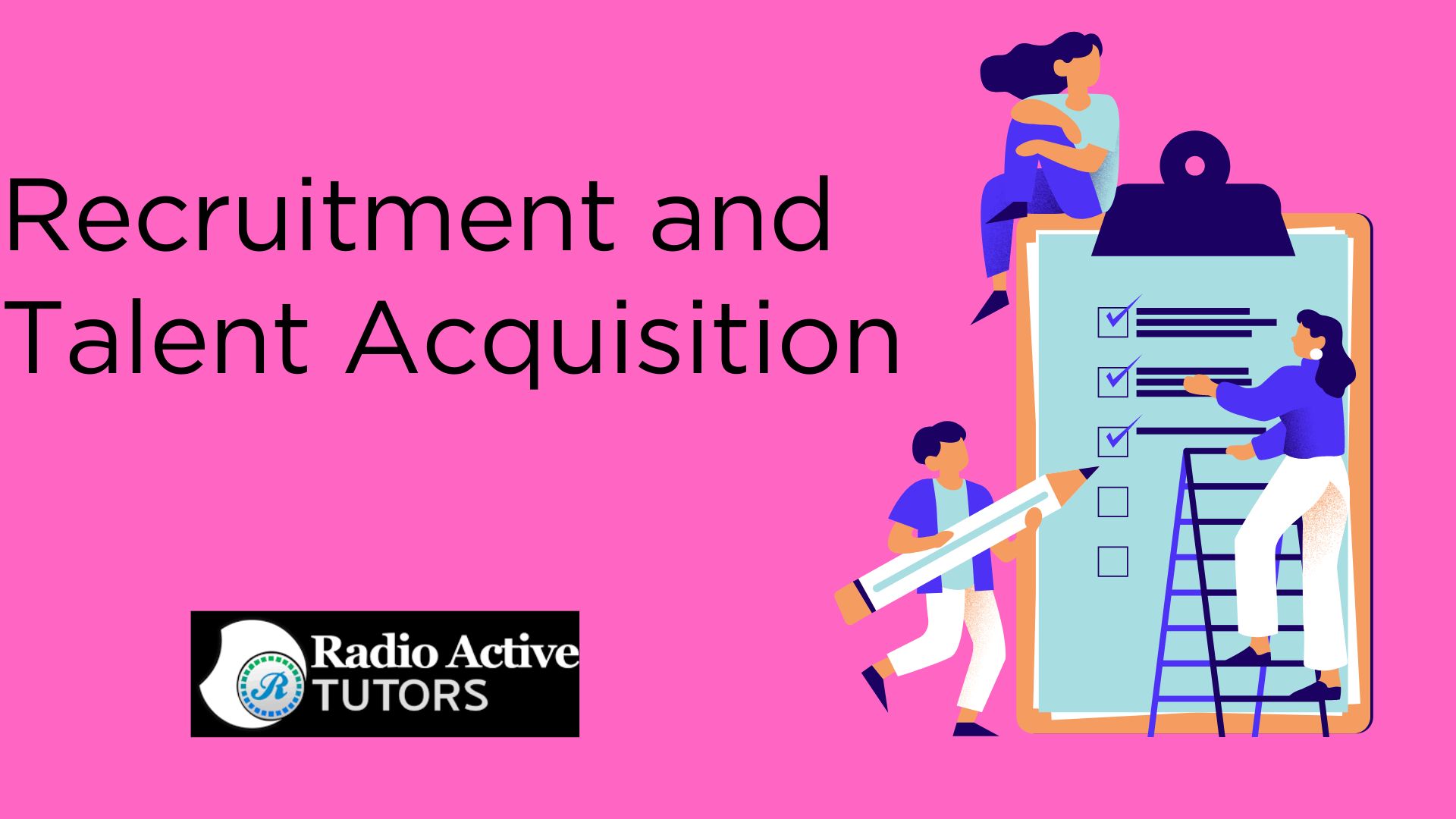
A. The Art of Attracting Top Talent
The art of attracting top talent is a nuanced and strategic endeavor that goes beyond traditional recruitment methods. It involves creating an organizational magnetism that resonates with high-caliber individuals. Firstly, a compelling employer brand is crucial, showcasing the company’s values, culture, and commitment to professional development. Utilizing diverse and innovative recruitment channels, such as social media platforms and professional networks, is essential to reach a broader pool of potential candidates. Offering competitive compensation packages, opportunities for career advancement, and a supportive work environment are key factors that entice top talent.
B. Innovative Recruitment Strategies
In the dynamic landscape of talent acquisition, innovative recruitment strategies have become essential for organizations seeking to stay ahead in the competitive market. One such strategy involves leveraging technology, such as artificial intelligence and data analytics, to streamline the candidate screening process and identify the best fits for the company. Social media platforms have also emerged as powerful tools for recruitment, allowing organizations to showcase their culture and job opportunities to a vast audience. Collaborations with educational institutions and industry partnerships provide avenues for early talent identification.
C. Leveraging Technology in Talent Acquisition
Leveraging technology in talent acquisition has become a cornerstone of modern recruitment strategies, revolutionizing the way organizations identify, attract, and retain top talent. Applicant Tracking Systems (ATS) have automated the application process, facilitating seamless candidate management and improving the efficiency of screening processes. Artificial intelligence (AI) is increasingly employed for predictive analytics, helping organizations identify potential candidates based on a more nuanced understanding of skills and cultural fit. Social media platforms and professional networking sites enable recruiters to engage with a wider pool of candidates and showcase the company culture.

A. Importance of Effective Onboarding
The importance of effective onboarding cannot be overstated in shaping a positive and enduring employee experience. Onboarding is the critical initial phase where new hires transition into their roles and become integrated into the organizational culture. A well-designed onboarding process not only provides practical information about job responsibilities and company policies but also sets the tone for the employee’s journey within the organization. It fosters a sense of belonging and connection, helping new hires understand their role in the larger organizational context. Effective onboarding contributes to higher levels of job satisfaction, employee engagement, and retention.
B. Creating a Welcoming Onboarding Experience
Creating a welcoming onboarding experience is an essential element in fostering a positive and lasting connection between new hires and their organizations. Beyond the traditional paperwork and procedural introductions, a warm onboarding experience involves making newcomers feel valued and supported from day one. Personalized welcomes, mentorship programs, and orientation sessions that highlight the company’s culture and values contribute to a sense of belonging. Providing a clear roadmap of what to expect during the onboarding process helps alleviate anxieties and ensures a smoother integration into the work environment. Additionally, creating opportunities for new hires to interact with their colleagues, leadership, and other team members cultivates a supportive network, further enhancing the overall onboarding experience.
C. Onboarding Best Practices from Leading Companies
Leading companies recognize that onboarding is a crucial phase in shaping employee engagement and long-term success within the organization. Examining onboarding best practices from these industry leaders unveils valuable insights. One notable practice is personalization; tailoring the onboarding experience to the individual needs and preferences of new hires fosters a sense of importance and belonging. Mentorship programs, where seasoned employees guide newcomers, provide not only practical insights but also emotional support. Utilizing technology effectively, such as interactive onboarding platforms and e-learning modules, enhances engagement and knowledge retention. Furthermore, leading companies often incorporate a holistic approach, extending onboarding beyond the first few days to ensure continuous integration and development.
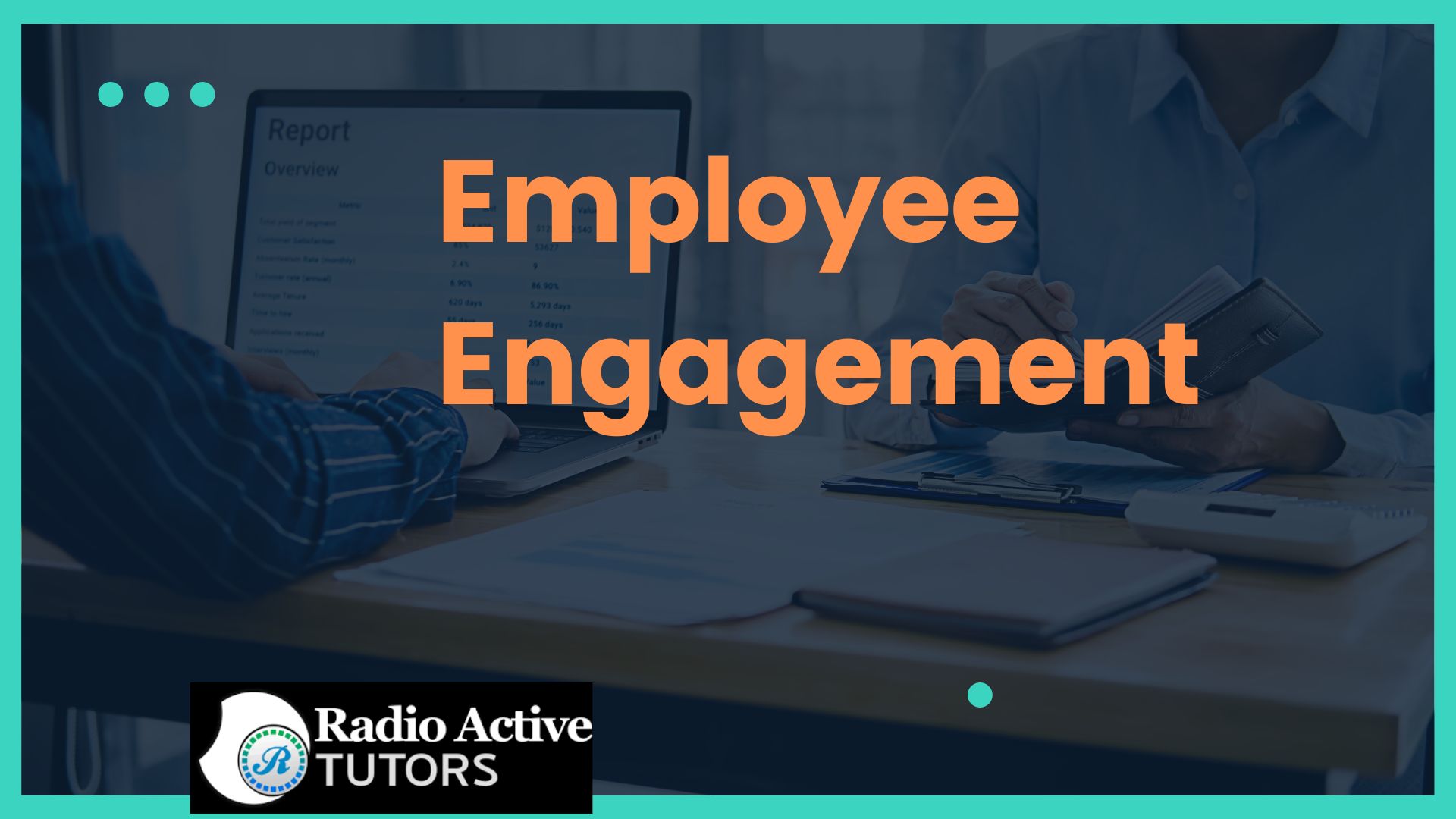
A. Understanding Employee Engagement
Understanding employee engagement is fundamental to creating a work environment where individuals are not just present but actively invested in their roles and the success of the organization. Employee engagement goes beyond job satisfaction; it reflects an emotional connection and commitment to the company’s mission, values, and objectives. Engaged employees are more likely to go the extra mile, contribute innovative ideas, and collaborate effectively with their colleagues. Factors influencing employee engagement encompass a variety of elements, including a sense of purpose, opportunities for professional growth, open communication, and a positive work culture. Organizations that prioritize understanding and fostering employee engagement benefit from increased productivity, higher retention rates, and a more resilient and motivated workforce.
B. Strategies to Boost Employee Morale
Strategies to boost employee morale are instrumental in creating a positive and energized workplace atmosphere, essential for employee satisfaction and productivity. Recognizing the value of employee morale, organizations implement various initiatives to uplift spirits and foster a sense of well-being. Regular and meaningful communication, both from leadership and among team members, creates a transparent and supportive environment. Employee recognition programs, acknowledging individual and team achievements, instill a sense of pride and motivation. Offering professional development opportunities and career growth paths demonstrates a commitment to employees’ futures, enhancing their engagement and morale. Flexibility in work arrangements, where feasible, contributes to a healthy work-life balance, improving overall job satisfaction.
C. Employee Engagement Surveys and Analysis
Employee engagement surveys and analysis play a crucial role in gauging the pulse of an organization’s workforce and identifying areas for improvement. These surveys, typically conducted at regular intervals, allow employees to provide candid feedback on various aspects of their work experience, from job satisfaction to organizational communication. The analysis of survey results provides valuable insights into the factors influencing employee engagement and helps organizations pinpoint strengths and areas that require attention. Through a careful examination of survey data, companies can identify patterns, trends, and potential areas of concern, enabling them to develop targeted strategies to enhance employee engagement.
A. Setting Clear Performance Expectations
Setting clear performance expectations is a fundamental aspect of effective performance management within an organization. By establishing transparent and specific goals, employees gain a clear understanding of what is expected of them, fostering a sense of direction and purpose. Clear performance expectations provide a roadmap for employees to align their efforts with organizational objectives, promoting efficiency and effectiveness. These expectations should not only outline what needs to be achieved but also articulate the standards of performance, deadlines, and any relevant metrics for success. Regular communication and feedback regarding expectations help employees stay on track and provide an opportunity for clarification or adjustment if necessary.
B. Continuous Performance Feedback
Continuous performance feedback is a dynamic and proactive approach to employee performance management that has gained prominence in modern workplaces. Unlike traditional annual reviews, continuous feedback involves providing regular, timely, and specific input on an employee’s performance throughout the year. This ongoing dialogue between managers and employees fosters a culture of transparency, open communication, and mutual growth. It allows for real-time adjustments, recognition of achievements, and identification of areas for improvement. The continuous feedback model aligns with the pace of today’s dynamic work environments, enabling employees to adapt quickly to evolving responsibilities and goals.
C. Balancing Recognition and Constructive Criticism
Continuous performance feedback is a dynamic and proactive approach to employee development that goes beyond traditional annual reviews. This strategy involves providing regular, ongoing feedback to employees about their performance, offering insights, recognition, and areas for improvement in real-time. Unlike sporadic evaluations, continuous feedback fosters a culture of open communication and collaboration between managers and employees. It allows for prompt recognition of achievements and provides constructive guidance to address challenges, promoting a constant cycle of improvement. By offering feedback regularly, organizations create an environment where employees feel supported, motivated, and empowered to enhance their skills and contribute positively to the workplace.
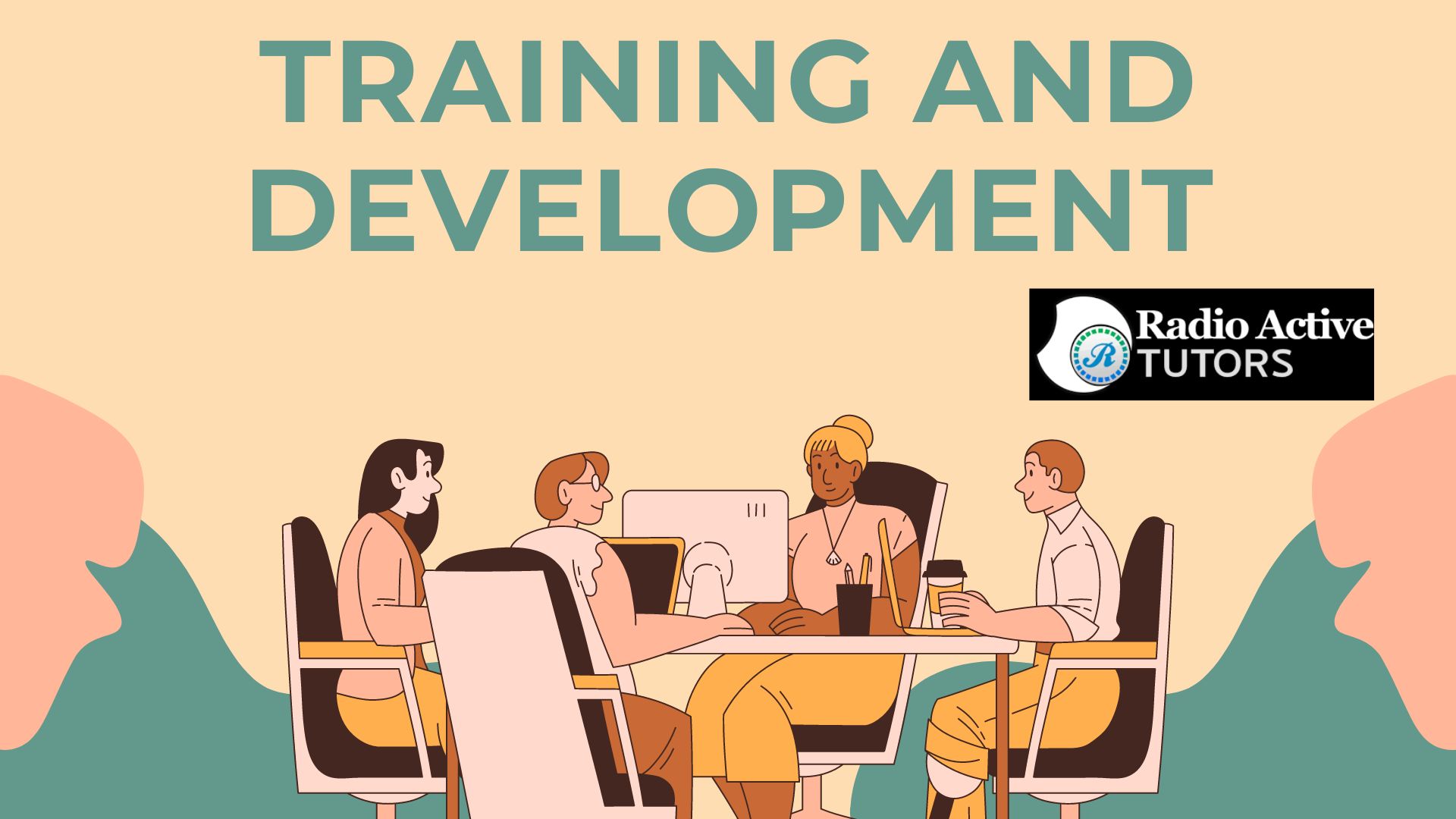
A. Identifying Training Needs
Identifying training needs is a fundamental aspect of strategic human resource management, crucial for ensuring that employees possess the skills and knowledge necessary to meet evolving job requirements. This process involves a comprehensive analysis of individual and collective performance, as well as an assessment of organizational goals. Surveys, performance evaluations, and discussions with employees and managers all contribute to understanding current competencies and areas for improvement. Additionally, staying attuned to industry trends and technological advancements helps anticipate future skill requirements. Once training needs are identified, organizations can tailor development programs that address specific gaps, whether they be technical skills, soft skills, or industry-specific knowledge.
B. Implementing Effective Employee Development Programs
Implementing effective employee development programs is a strategic initiative aimed at nurturing the skills, knowledge, and capabilities of individuals within an organization. These programs go beyond traditional training sessions, encompassing a holistic approach to professional growth. They may include mentorship opportunities, workshops, online courses, and experiential learning to cater to diverse learning styles. Effective programs align with both individual career aspirations and organizational objectives, fostering a symbiotic relationship between employee development and company success. Moreover, ongoing assessments and feedback mechanisms ensure that the programs evolve to meet changing needs.
C. Measuring Training Effectiveness
Measuring training effectiveness is a crucial step in determining the impact and return on investment of learning and development initiatives within an organization. It involves assessing the extent to which training programs meet their objectives and contribute to the enhancement of employee skills and performance. Key performance indicators (KPIs), such as improved job performance, increased productivity, and positive changes in behavior, are commonly used metrics. Additionally, post-training assessments and evaluations provide valuable insights into the effectiveness of the training content and delivery methods. Continuous feedback loops, including surveys and discussions with participants and their supervisors, offer a qualitative perspective on the training’s impact.
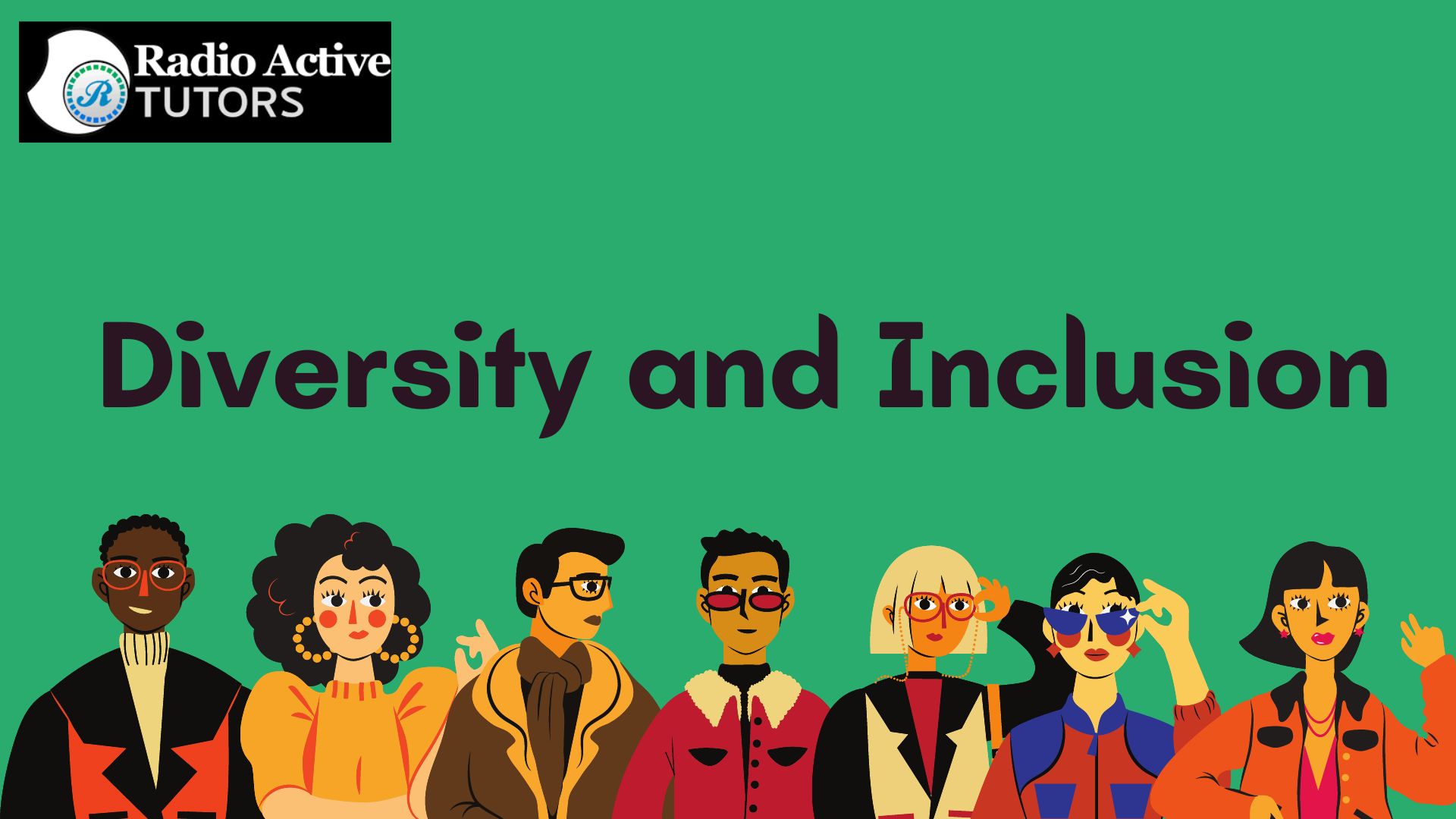
A. Promoting Diversity in the Workplace
Promoting diversity in the workplace is a strategic imperative that transcends mere compliance with regulations—it is an acknowledgment of the invaluable benefits derived from a varied and inclusive workforce. This involves actively seeking and cultivating a workforce with individuals from diverse backgrounds, including different ethnicities, genders, ages, religions, abilities, and more. Embracing diversity fosters creativity, innovation, and a wealth of perspectives, which can lead to enhanced problem-solving and decision-making. Moreover, a diverse workplace reflects the broader society, contributing to a positive corporate image and increasing the company’s appeal to a wide range of customers and clients. To promote diversity effectively, organizations need to establish inclusive policies, offer diversity training, and create an environment that values and celebrates differences.
B. Strategies for Inclusive Work Cultures
Strategies for creating inclusive work cultures are integral to fostering environments where every individual feels valued, respected, and empowered to contribute their unique perspectives and talents. Inclusive workplaces go beyond simply acknowledging diversity; they actively seek to create a sense of belonging for all employees. One key strategy involves establishing clear and inclusive policies that promote diversity and equity, ensuring fair treatment and opportunities for everyone. Providing diversity and inclusion training helps raise awareness and build empathy among employees, fostering a culture of understanding. Encouraging open communication and creating channels for employees to voice their concerns or suggestions is another essential strategy.
C. Case Studies on Successful Diversity and Inclusion Initiatives
Case studies on successful diversity and inclusion initiatives offer illuminating insights into how organizations can effectively implement strategies to create equitable and inclusive workplaces. One example is Company X, which instituted targeted diversity recruiting efforts, resulting in a more representative workforce. Through mentorship programs and diversity training, the company successfully nurtured an inclusive culture that celebrated differences. Another case is Company Y, which implemented flexible work arrangements and family-friendly policies, accommodating diverse needs and promoting a more inclusive environment. Both companies demonstrated that successful diversity and inclusion initiatives go beyond policy implementation. These case studies serve as valuable benchmarks, showcasing the tangible benefits of creating workplaces that embrace diversity and inclusion as key drivers of organizational success.

A. Handling Employee Conflicts
Handling employee conflicts is a critical skill for effective human resource management and workplace harmony. Conflicts inevitably arise in any organization, and how they are managed can significantly impact the overall work environment. One key strategy involves promoting open communication channels, encouraging employees to express their concerns and perspectives. Identifying the root causes of conflicts is crucial, and Human Resource professionals can facilitate mediation or provide conflict resolution training to help employees develop effective communication and problem-solving skills. Establishing clear conflict resolution policies and procedures sets expectations for behavior and ensures consistency in addressing disputes.
B. Navigating Employee Relations Challenges
Navigating employee relations challenges requires a strategic and proactive approach to address issues and maintain a positive workplace atmosphere. Employee relations encompass a broad spectrum of interactions and dynamics within an organization, including conflicts, communication breakdowns, and performance concerns. Human Resource Management professionals play a crucial role in providing guidance and facilitating resolutions. This involves actively listening to employees, understanding their perspectives, and addressing concerns in a fair and consistent manner. Creating channels for open communication, implementing conflict resolution mechanisms, and offering mediation services are key strategies. Moreover, HR should stay abreast of legal and ethical considerations to ensure compliance and fairness in handling employee relations challenges.
C. Building Positive Employee Relations
Building positive employee relations is foundational for creating a thriving and harmonious workplace environment. It involves cultivating strong connections between employees and the organization, fostering a sense of trust, mutual respect, and open communication. Human Resource Management professionals play a pivotal role in this process by implementing practices that prioritize employee well-being, such as regular feedback mechanisms, recognition programs, and opportunities for professional development. Establishing clear communication channels, both formal and informal, ensures that employees feel heard and valued. Additionally, promoting a culture of inclusivity, fairness, and transparency builds a strong foundation for positive employee relations. HR should also play a proactive role in resolving conflicts, addressing concerns, and promoting a healthy work-life balance.

A. Designing Competitive Compensation Packages
Designing competitive compensation packages is a strategic imperative for organizations aiming to attract and retain top talent in today’s competitive job market. Beyond salary considerations, these packages encompass a comprehensive array of benefits, incentives, and perks that not only meet the financial needs of employees but also contribute to their overall well-being. A well-designed compensation package includes competitive base salaries, performance-related bonuses, health and retirement benefits, and other non-monetary perks such as flexible work arrangements, professional development opportunities, and wellness programs.
B. Balancing Monetary and Non-Monetary Benefits
Balancing monetary and non-monetary benefits is a key consideration in crafting comprehensive and appealing employee compensation packages. While competitive salaries are crucial for attracting top talent, non-monetary benefits play an increasingly vital role in fostering employee satisfaction and retention. Non-monetary benefits encompass a range of offerings, including health and wellness programs, flexible work arrangements, professional development opportunities, and a positive work environment. Striking the right balance between monetary compensation and these non-financial incentives is essential for meeting the diverse needs and preferences of a modern workforce.
C. Addressing Pay Equity Issues
Addressing pay equity issues is an imperative step for organizations committed to fostering a fair and inclusive workplace. Pay equity involves ensuring that employees receive equal compensation for work of equal value, regardless of gender, race, or other protected characteristics. HR professionals play a vital role in conducting regular salary audits, identifying and rectifying any discrepancies in pay scales. Implementing transparent and standardized compensation structures, as well as promoting salary negotiation training, can contribute to closing gender and diversity-related pay gaps. Additionally, organizations should cultivate a culture of openness around compensation, encouraging employees to discuss their pay without fear of reprisal.
A. The Role of Technology in HRM
The role of technology in Human Resource Management (HRM) has undergone a transformative shift, evolving from primarily administrative support to a strategic enabler of organizational success. Technology streamlines Human Resource Management processes, automating routine tasks such as payroll, benefits administration, and time tracking, allowing HR professionals to focus on more strategic initiatives. Advanced HRM software and analytics tools facilitate data-driven decision-making, aiding in workforce planning, talent acquisition, and performance management. Additionally, technology plays a crucial role in fostering employee engagement through communication platforms, learning management systems, and employee feedback tools. The rise of artificial intelligence (AI) further enhances Human Resource Management, offering predictive analytics for talent acquisition, chatbots for employee queries, and algorithms for unbiased performance evaluations.
B. Adopting Human Resource Management Automation Tools
Adopting HR automation tools represents a paradigm shift in the way Human Resource Management (HRM) functions within organizations. These tools leverage technology to streamline and optimize various HR processes, ranging from recruitment and onboarding to performance management and payroll processing. Automated applicant tracking systems enhance the efficiency of talent acquisition, helping HR professionals identify and engage with top candidates. Additionally,Human Resource Management automation tools simplify routine administrative tasks, reducing the likelihood of errors and allowing HR teams to allocate more time to strategic initiatives. Self-service portals for employees, powered by automation, enable seamless access to HR information, benefit enrollment, and leave management.
C. Emerging Trends in Human Resource Management Technology
Emerging trends in HR technology are reshaping the landscape of Human Resource Management, ushering in a new era of innovation and efficiency. One notable trend is the increasing prevalence of Artificial Intelligence (AI) and machine learning in Human Resource Management processes. These technologies enable predictive analytics for talent management, personalized learning experiences, and data-driven decision-making. Another trend is the rise of Employee Experience (EX) platforms that focus on enhancing the overall journey of employees within the organization, from recruitment to retirement. Mobile HR applications, augmented reality for training, and advanced data analytics for workforce planning are also gaining traction. The integration of chatbots and virtual assistants in HR functions is streamlining communication and providing instant support for routine queries.

A. Promoting Employee Well-being
Promoting employee well-being has become a cornerstone of progressive workplace strategies, recognizing that the health and happiness of employees are integral to overall organizational success. This holistic approach goes beyond traditional benefits packages and encompasses initiatives that address physical, mental, and emotional well-being. Companies are implementing wellness programs, offering fitness incentives, and providing mental health support services to create a supportive and balanced work environment. Flexible work arrangements, mindfulness programs, and initiatives promoting a healthy work-life balance contribute to fostering employee well-being. Moreover, fostering a positive company culture that values and prioritizes the well-being of its employees not only improves job satisfaction but also boosts productivity, engagement, and employee retention.
B. Designing Effective Wellness Programs
Designing effective wellness programs requires a thoughtful and comprehensive approach to address the diverse dimensions of employee well-being. Such programs go beyond conventional healthcare benefits, aiming to foster holistic health – encompassing physical, mental, and emotional aspects. Initiatives may include fitness challenges, nutritional counseling, stress management workshops, and mental health resources. Personalized wellness plans, accessible resources, and incentives for participation enhance the program’s effectiveness. Collaborating with healthcare professionals, leveraging technology for tracking and engagement, and ensuring inclusivity for all employees are vital considerations. Regular assessments and feedback loops help tailor programs to evolving employee needs.
C. Measuring the Impact of Wellness Initiatives
Measuring the impact of wellness initiatives is crucial for organizations aiming to understand the effectiveness of their efforts in promoting employee well-being. Key performance indicators (KPIs) may include metrics such as participation rates, changes in health outcomes, and employee satisfaction surveys. Analyzing health-related data, such as reduced absenteeism or improved productivity, provides tangible insights into the impact of wellness programs on overall organizational performance. Additionally, feedback from employees about the perceived value and effectiveness of wellness initiatives is essential. Regular assessments and data analysis allow organizations to make informed adjustments to their programs, ensuring they remain relevant and impactful.

A. Importance of Succession Planning
Succession planning holds paramount importance in organizational strategy, serving as a proactive approach to ensure the continuity of leadership and the sustained success of an organization. This strategic process involves identifying and developing employees with the potential to fill key leadership positions within the company. Succession planning mitigates the risks associated with unexpected departures of key personnel, retirement, or other leadership transitions. By grooming internal talent, organizations can bridge skill gaps, maintain institutional knowledge, and ensure a seamless transition of leadership when the need arises. Furthermore, succession planning contributes to employee engagement by demonstrating a commitment to individual career development.
B. Identifying and Developing Future Leaders
Identifying and developing future leaders is a critical initiative for organizations aiming to secure a pipeline of skilled and strategic leaders. This process involves a meticulous assessment of employees’ potential, skills, and leadership qualities. Identifying emerging leaders early allows organizations to tailor development programs that nurture their growth and prepare them for future leadership roles. This may include mentorship programs, leadership training, and exposure to cross-functional experiences. Investing in the development of future leaders not only ensures the organization has a pool of talented individuals ready to step into key roles but also contributes to a positive and motivated workforce.
C. Case Studies on Successful Succession Planning
Examining case studies on successful succession planning provides valuable insights into how organizations strategically manage leadership transitions, ensuring continuity and sustained success. One illustrative case involves Company X, which systematically identified high-potential individuals across various departments and implemented a comprehensive leadership development program. As key executives approached retirement, the company seamlessly transitioned internal talent into leadership roles, maintaining operational stability and preserving institutional knowledge. Another notable case is Company Y, which integrated succession planning into its organizational culture by emphasizing leadership development at all levels. This proactive approach not only facilitated smooth transitions but also contributed to a culture of continuous learning and advancement.
A. Navigating Human Resource Management Legalities
Navigating Human Resource Management legalities is a critical aspect of Human Resource Management, given the complex and evolving landscape of employment laws and regulations. Human Resource Management professionals play a central role in ensuring that organizational practices align with local and international labor laws. This involves staying abreast of legal updates, including changes in employment legislation, discrimination laws, and workplace safety regulations. Human Resource Management must also ensure that hiring, promotion, and termination processes comply with anti-discrimination laws to foster a fair and equitable work environment.
B. Ensuring Ethical Human Resource Management Practices
Ensuring ethical Human Resource Management practices is fundamental to building a workplace culture that prioritizes fairness, integrity, and respect. Ethical Human Resource Management practices involve conducting hiring processes that are free from bias, ensuring equal opportunities for all candidates. Human Resource Management professionals play a crucial role in upholding confidentiality, treating employee information with the utmost privacy and discretion. Fair and transparent performance evaluations, unbiased promotion decisions, and equitable compensation practices are all integral components of ethical HR. Additionally, fostering open communication channels, addressing employee concerns confidentially, and providing avenues for reporting unethical behavior contribute to a trusting and ethical work environment.
C. Compliance with Employment Laws
Compliance with employment laws is a cornerstone of effective Human Resource Management, ensuring that organizations operate within the legal frameworks that govern employer-employee relationships. Human Resource Management professionals play a central role in staying informed about and implementing policies that align with local, state, and federal employment laws. This encompasses a broad range of regulations, including those related to minimum wage, working hours, workplace safety, discrimination, and harassment. HR departments are responsible for disseminating information on these laws, conducting regular training sessions, and establishing procedures that ensure organizational practices adhere to legal standards.
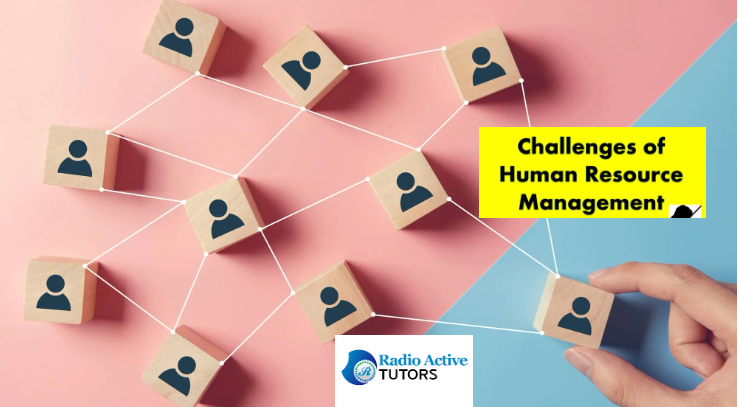
A. Managing Human Resource Management in Multinational Companies
Managing Human Resource Management (HRM) in multinational companies presents a unique set of challenges and opportunities, given the diverse cultural, legal, and operational contexts in which these organizations operate. Human Resource Management professionals in multinational companies must navigate variations in labor laws, cultural norms, and employee expectations across different regions. This involves developing global HR policies that comply with local regulations while maintaining a consistent organizational culture
B. Cross-Cultural Human Resource Management Considerations
Cross-cultural Human Resource Management (HRM) considerations are vital in today’s globalized business landscape, where organizations operate in diverse cultural contexts. HR professionals must navigate and understand the nuances of different cultural norms, values, and communication styles to ensure effective management of a multicultural workforce. This involves adapting Human Resource Management practices, such as recruitment, training, and performance management, to resonate with various cultural expectations. Sensitivity to cultural differences becomes crucial in fostering an inclusive work environment and avoiding potential misunderstandings. HR policies should be designed with a global perspective, acknowledging and respecting cultural diversity while maintaining consistency with the organization’s values.
C. Global Workforce Trends
Global workforce trends are continuously evolving, shaped by technological advancements, demographic shifts, and the changing nature of work. One notable trend is the rise of remote work, accelerated by advancements in digital communication tools and the increased emphasis on work-life balance. Organizations are adapting to more flexible work arrangements to attract and retain talent in a competitive landscape. Another trend involves the growing importance of upskilling and reskilling programs, as automation and artificial intelligence impact job requirements. Diversity and inclusion are gaining prominence, with organizations recognizing the value of a diverse workforce in driving innovation and adaptability
A. Predicting the Future of Human Resource Management
Predicting the future of Human Resource Management (HRM) involves anticipating how various factors will shape the workplace and the role of HR professionals. Technology is expected to continue playing a transformative role, with artificial intelligence and data analytics influencing talent acquisition, employee engagement, and decision-making processes. The concept of remote work is likely to evolve further, potentially becoming a standard practice rather than an exception. Human Resource Management may increasingly focus on holistic employee well-being, addressing mental health, work-life balance, and overall job satisfaction.
B. Adapting to Technological Advancements
Adapting to technological advancements is a critical imperative for organizations seeking to remain competitive and efficient in the modern business landscape. Rapid developments in technology, such as artificial intelligence, automation, and data analytics, are reshaping how work is done and how organizations operate. Human Resource Management professionals play a central role in navigating this technological evolution, from leveraging advanced tools for talent acquisition and management to implementing innovative learning and development solutions. Embracing digital platforms for communication, collaboration, and performance management enhances workplace efficiency and responsiveness
C. Anticipated Changes in Human Resource Management Practices
Anticipated changes in Human Resource Management (HRM) practices signal a dynamic evolution in response to shifting workplace trends and societal expectations. One key change is the increasing emphasis on employee experience, encompassing aspects like well-being, diversity, and work-life balance. The integration of artificial intelligence (AI) and analytics in HR processes is anticipated to streamline talent acquisition, enhance decision-making, and provide data-driven insights for strategic workforce planning. Remote work practices, accelerated by recent global events, are likely to persist, requiring Human Resource Managementto focus on creating virtual employee engagement strategies and flexible work policies. Continuous learning and development will become even more critical as technology evolves, necessitating agile reskilling initiatives to keep pace with changing job requirements
A. What is the role of Human Resource Management in organizational success?
B. How can companies enhance their recruitment strategies?
C. Why is employee engagement crucial for business?
D. What are the key components of a successful onboarding process?
E. How can HR contribute to diversity and inclusion?
F. What are the emerging trends in HR technology?
G. How can organizations ensure legal compliance in Human Resource Management?
H. What challenges do global companies face in Human Resource Management?
I. What does the future hold for human resource management?

A. Recap of Key Human Resource Management Topics
In conclusion, this exploration of key Human Resource Management (HRM) topics has illuminated the multifaceted nature of HRM and its pivotal role in organizational success. From foundational aspects like the definition and evolution of HRM practices to strategic considerations such as aligning HRM with organizational goals and implementing effective talent acquisition and development strategies, the diverse facets of Human Resource Management have been highlighted. Case studies of successful implementations, discussions on employee engagement, and the integration of technology underscore the dynamic and evolving nature of HRM practices. The importance of ethical considerations, compliance with employment laws, and the strategic foresight required for succession planning were also emphasized.
B. The Evolving Role of Human Resource Management in the Workplace
In conclusion, the exploration of the evolving role of Human Resource Management (HRM) in the workplace reveals a transformative journey that aligns closely with the dynamic nature of modern organizations. From its traditional focus on administrative functions to a strategic partner driving organizational success, HRM has undergone significant changes. The emphasis on employee experience, diversity and inclusion, and the integration of technology underscores a shift towards creating more agile, adaptive, and people-centric workplaces. As HRM becomes increasingly proactive in addressing challenges such as talent acquisition, employee well-being, and the impact of technological advancements, it emerges as a crucial driver of organizational resilience and success.
C. Encouragement for Ongoing Learning and Adaptation
In conclusion, the encouragement for ongoing learning and adaptation emerges as a fundamental theme in the ever-evolving landscape of Human Resource Management (HRM). The exploration of diverse topics within HRM, from talent acquisition and employee engagement to succession planning and technological integration, underscores the need for a continuous learning mindset. As workplaces transform and global trends reshape the nature of work, HR professionals must embrace a commitment to staying informed, adaptable, and innovative. Organizations that foster a culture of ongoing learning not only empower their HR teams to navigate challenges but also cultivate a workforce that is agile and resilient in the face of change.

Hard Binding Dissertation ( 4 Key Features)
6 month(s) ago
Psychology dissertation topics (5 Major Areas)
6 month(s) ago
Dissertation editor (5 Key Services)
6 month(s) ago
Dissertation Coaching (7 Main Benefits)
6 month(s) ago
Dissertation Acknowledgement Format ( 6 Key Tips)
6 month(s) ago
Psychology Dissertation Topics ( 7 Main Ideas)
6 month(s) ago
Dissertation Binding ( Key Tips)
6 month(s) ago
Dissertation editing services (8 Key Areas)
6 month(s) ago
Dissertation template (Student's Guide)
6 month(s) ago
How to come up with a dissertation topic (9 Key Steps)
6 month(s) ago
Radio Active Tutors is a freelance academic writing assistance company. We provide our assistance to the numerous clients looking for a professional writing service.
Need academic writing assistance ?
Order Now
